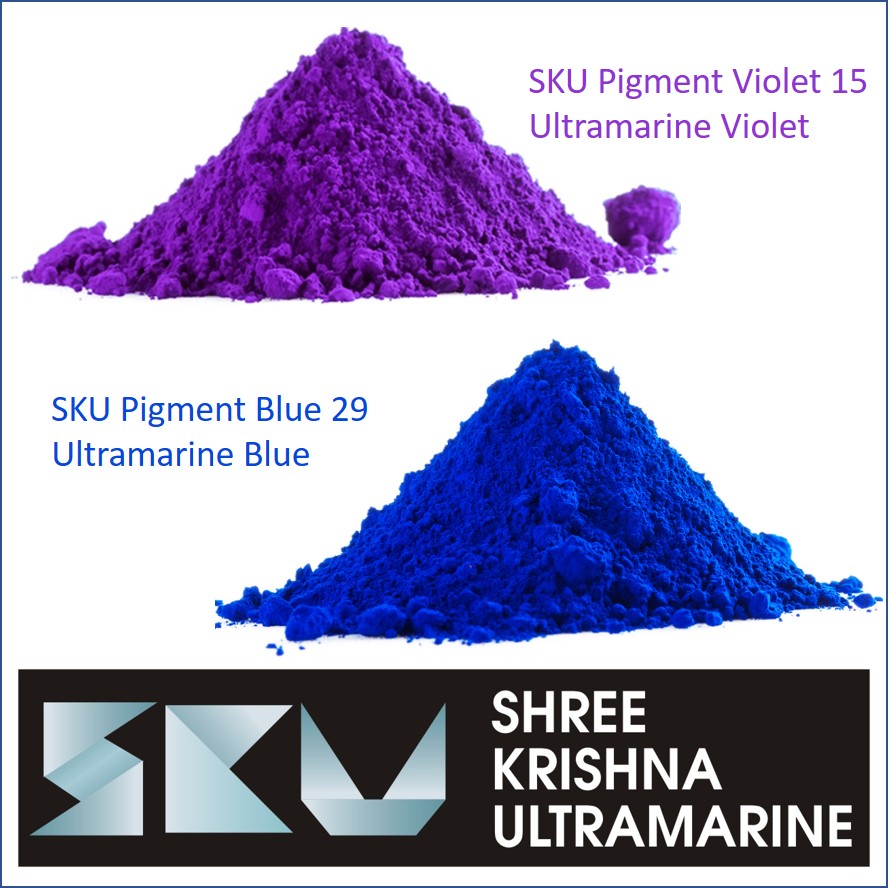Ultramarine Pigments: The Timeless Brilliance of Blue and Violet Shades

For centuries, color has defined art, design, and industry. Among the most significant hues, Ultramarine is revered for its vivid tones. Today, companies like SKU Pigments supply high-quality Ultramarine pigments, including Ultramarine Blue, Ultramarine Violet, Pigment Blue 29, and Pigment Violet. From construction and cosmetics, Ultramarine has become the standard of modern blue pigments.
The History and Significance of Ultramarine
The name Ultramarine comes from the Latin “ultra mare,” meaning “beyond the sea,” a reference to lapis lazuli originally imported from Afghanistan. For centuries, it was the most expensive pigment, used by Renaissance masters to illuminate manuscripts. It symbolized wealth and divinity.
Modern chemistry made it possible to produce artificially Ultramarine pigments, bringing the once-exclusive shade into everyday use. This breakthrough turned a luxury color into a widely available solution for countless sectors.
Ultramarine Blue Pigments
Ultramarine Blue pigments—the synthetic form of Pigment Blue 29—are globally trusted. Known for their clarity, they are perfect for sensitive applications. They are used in:
• Architectural and industrial paints for durability and brilliance.
• Automotive and packaging industries, thanks to chemical safety.
• Publishing and packaging, where clarity is vital.
• Cosmetics, given their non-toxic nature.
This balance of durability and eco-friendliness keeps Ultramarine Blue among the top pigments.
Exploring the Subtlety of Ultramarine Violet
Ultramarine Violet offers delicate hues that appeal in decorative paints. Pigment Violet derived from Ultramarine is stable, making it ideal for eco-friendly materials.
Its sophisticated tone enhances luxury packaging, while ensuring longevity without chemical breakdown.
Industrial Uses of Ultramarine Blue
Pigment Blue—particularly Ultramarine Blue pigments—remains a market leader. It offers eco-friendly performance for:
• Car finishes with brilliant sheen.
• Branding, ensuring stable shades.
• Tiles, flooring, cement, adding strength and aesthetics.
This cross-sector utility ensures Pigment Blue’s staying power.
Why Industries Prefer Ultramarine
• Non-Toxic & Safe: Suitable for sensitive products.
• Heat & Light Resistant: Stable in outdoor use.
• Eco-Friendly: Green production methods.
• Cost-Effective: Affordable vs. natural pigments.
• Versatile: Across paints, plastics, printing, and construction.
Where Ultramarine Pigments Shine
1. Paints & Coatings: Decorative finishes.
2. Plastics & Rubber: Safe for packaging.
3. Cosmetics: Eyeshadow and nail polish.
4. Construction: Plaster and decorative finishes.
5. Printing & Inks: Precision printing.
Why Choose SKU Pigments?
SKU Pigments leads the market, offering reliability in Ultramarine pigments. Their product portfolio includes:
• Pigment Blue 29 for mass production.
• Ultramarine Violet and Pigment Violet for luxury tones.
• Custom shades for tailored applications.
Their reputation is built on consistent quality and green practices.
Ultramarine: From Heritage to High-Tech
From a rare treasure to a global industrial pigment, Ultramarine has evolved with industries. Pigment Blue Whether it’s the timeless vibrancy of Ultramarine Blue, the sophistication of Ultramarine Violet, or the stability of Pigment Blue 29, Ultramarine pigments remain essential.
With SKU Pigments as a global supplier, industries secure reliable pigment supply. As demand for non-toxic pigments rises, Ultramarine will remain dominant in global markets.
Common Queries About Ultramarine
1. What is Ultramarine?
A vibrant pigment from lapis lazuli, now produced synthetically.
2. What is Pigment Blue 29?
A widely used industrial pigment.
3. Where is Ultramarine Violet used?
In fine arts and specialty industries.
4. Are Ultramarine pigments safe?
Certified safe for cosmetics and toys.
5. Why choose SKU Pigments?
Leaders in Ultramarine innovation.